|
Pseudochazara amymone / Brown's Grayling
Aminonia
Nymphalidae - Satyrinae
Pseudochazara amymone Brown, 1976. TL: District of Ioanniina, N.W. Greece.
 
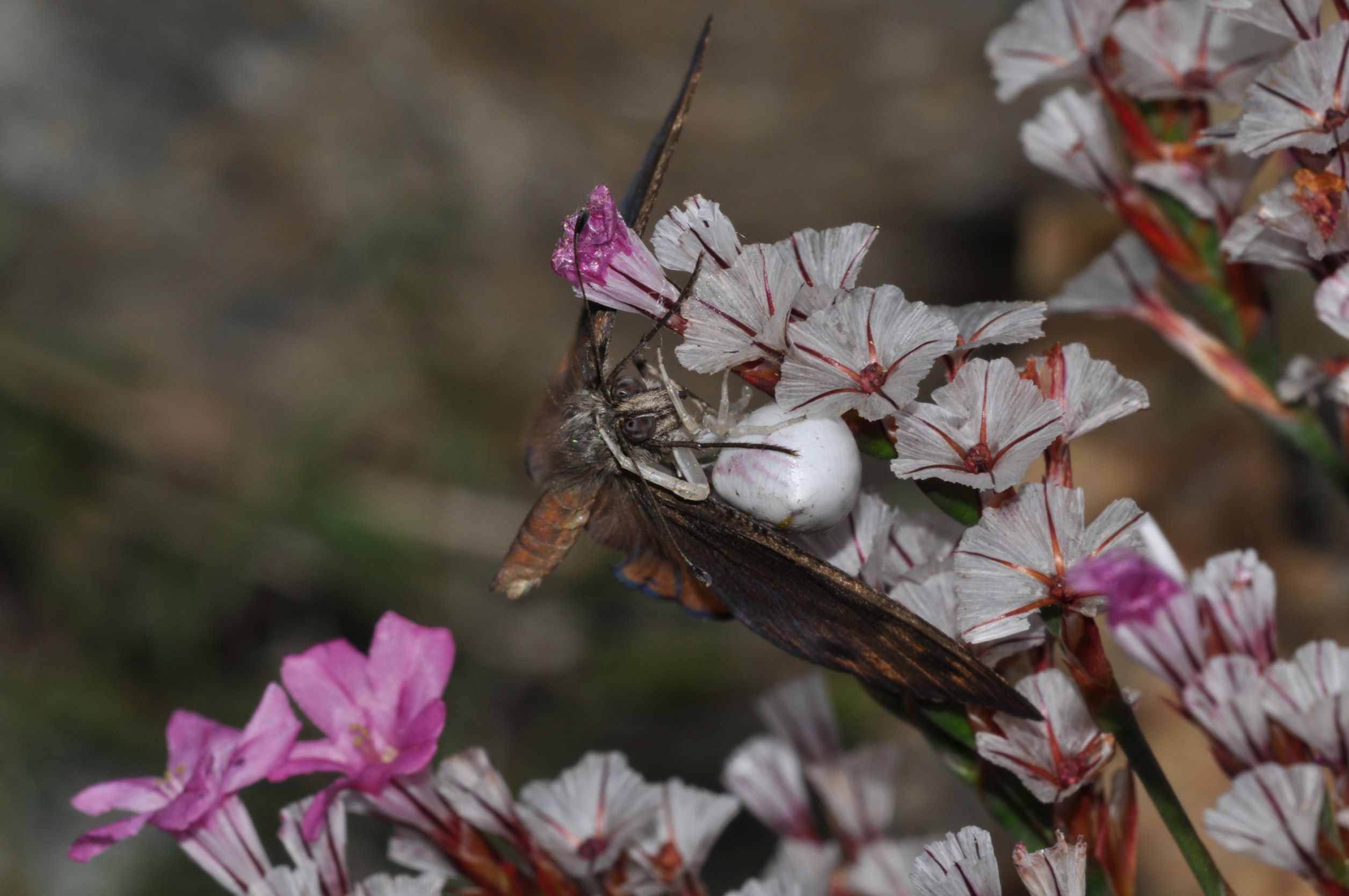 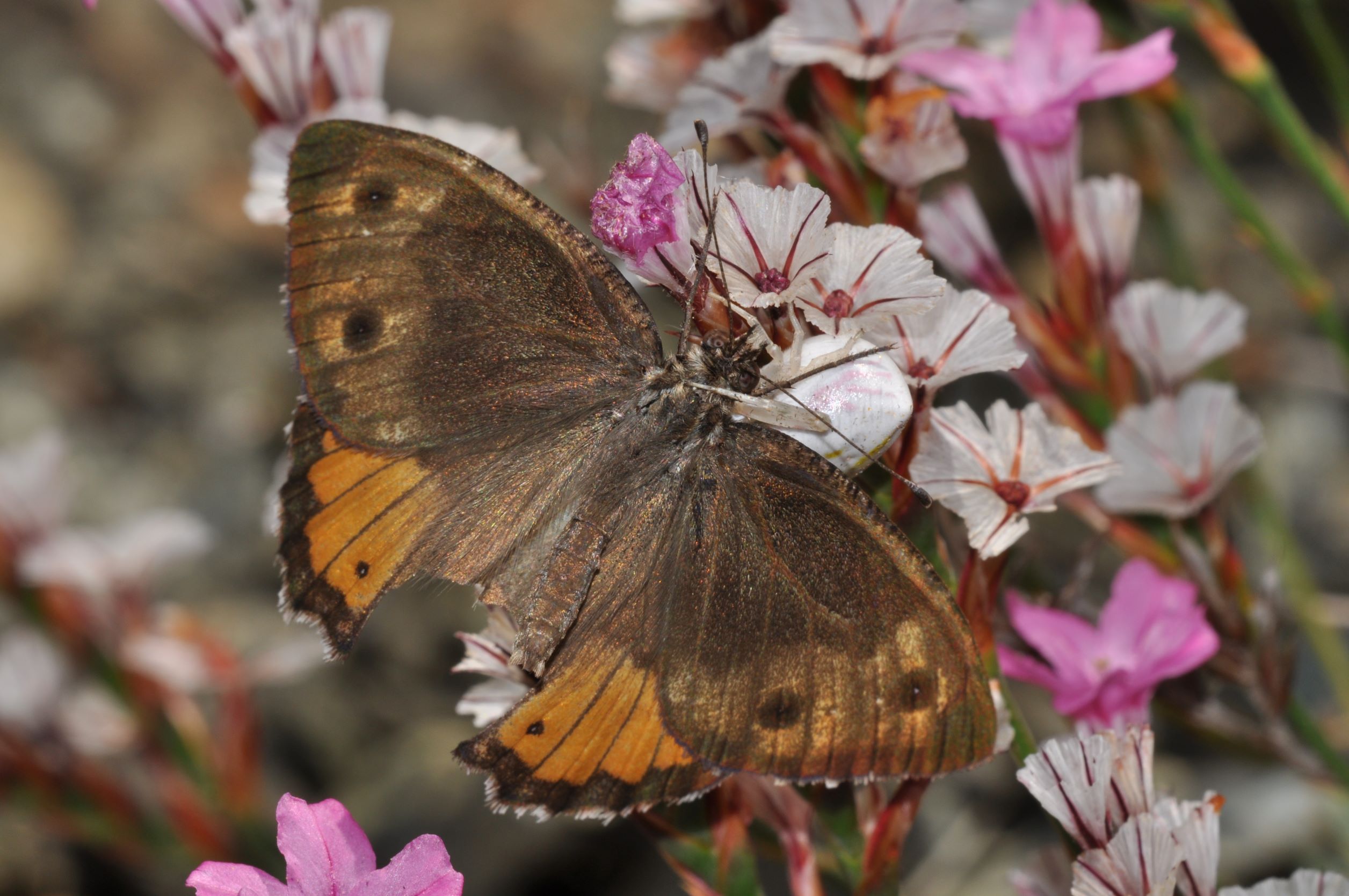
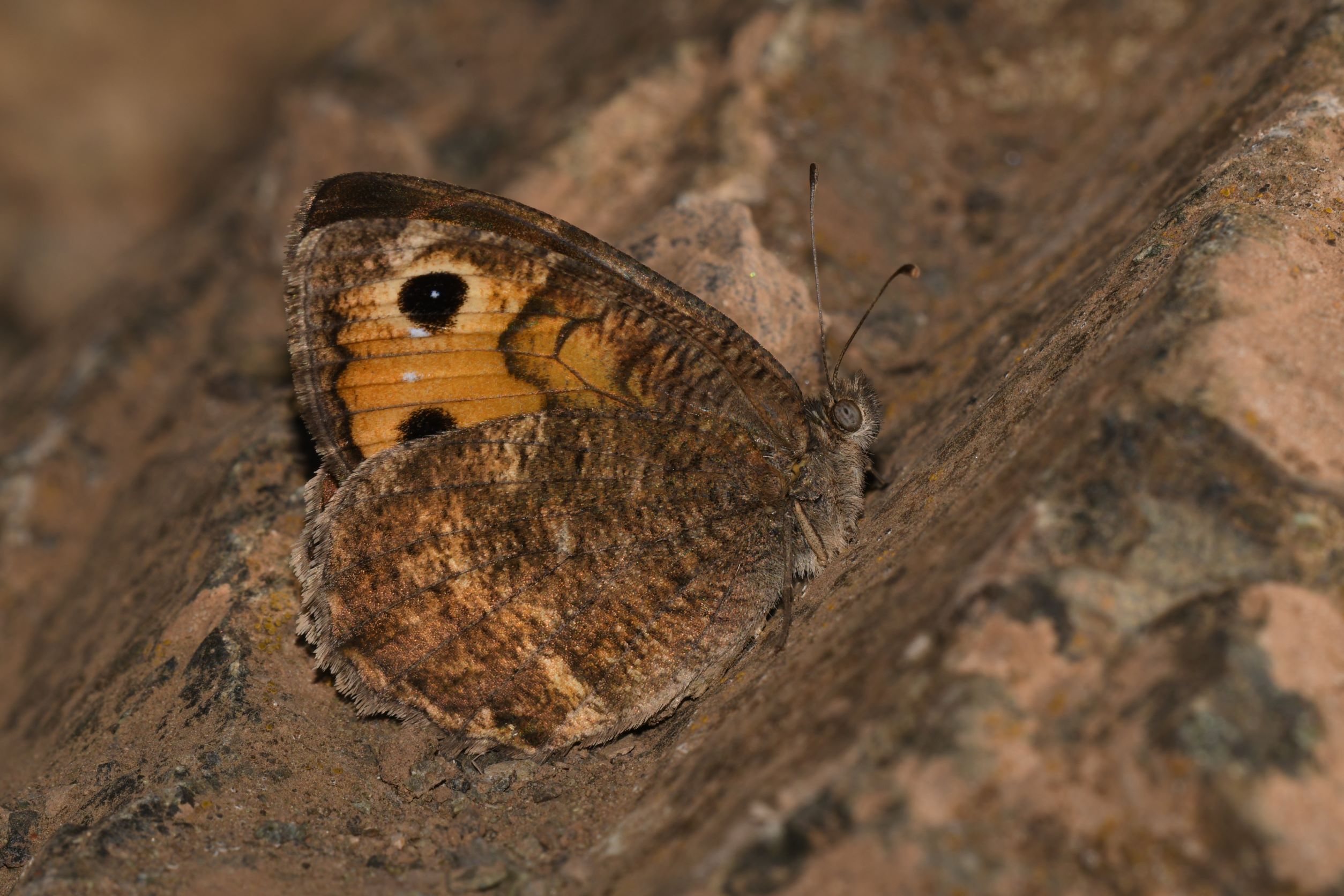 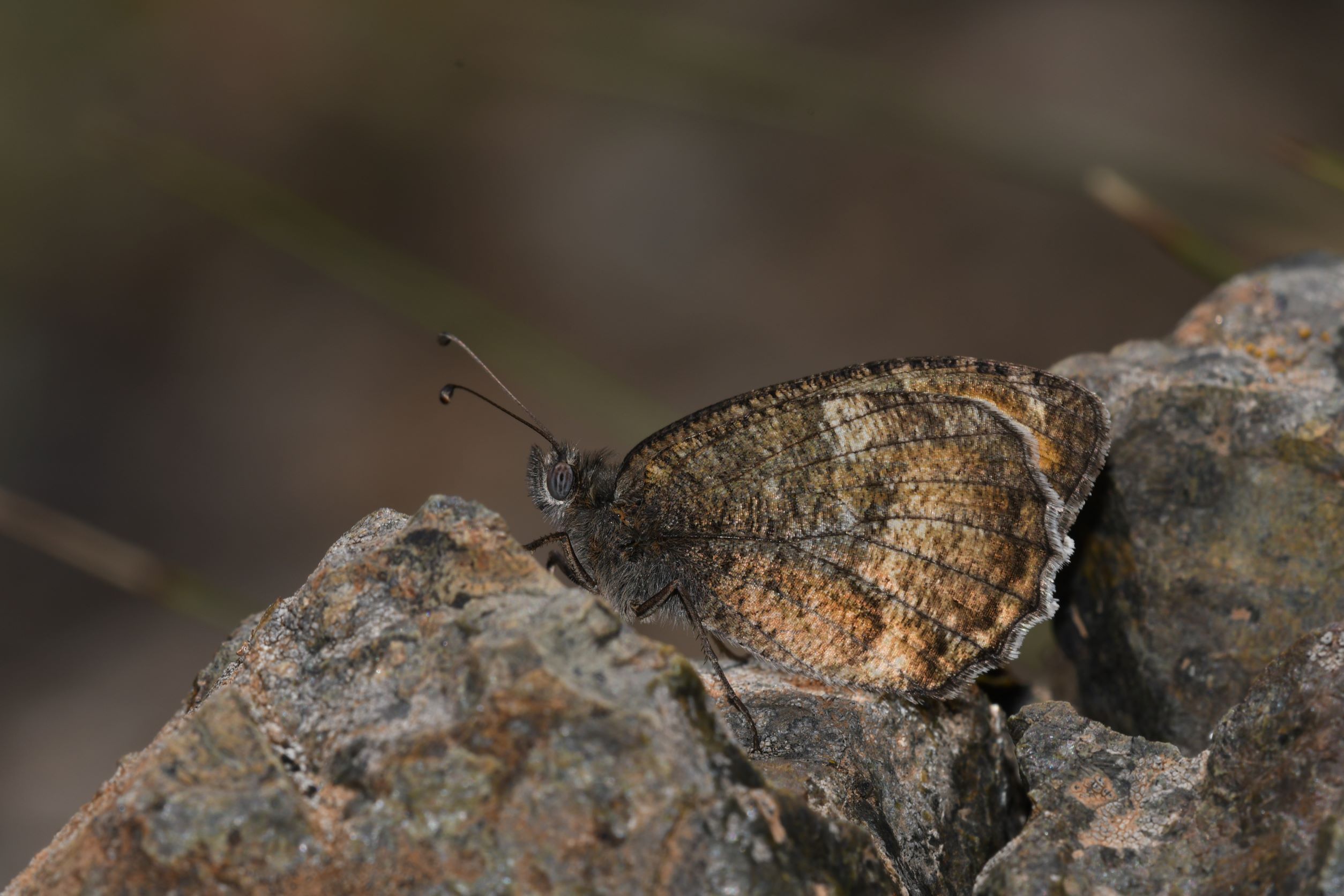 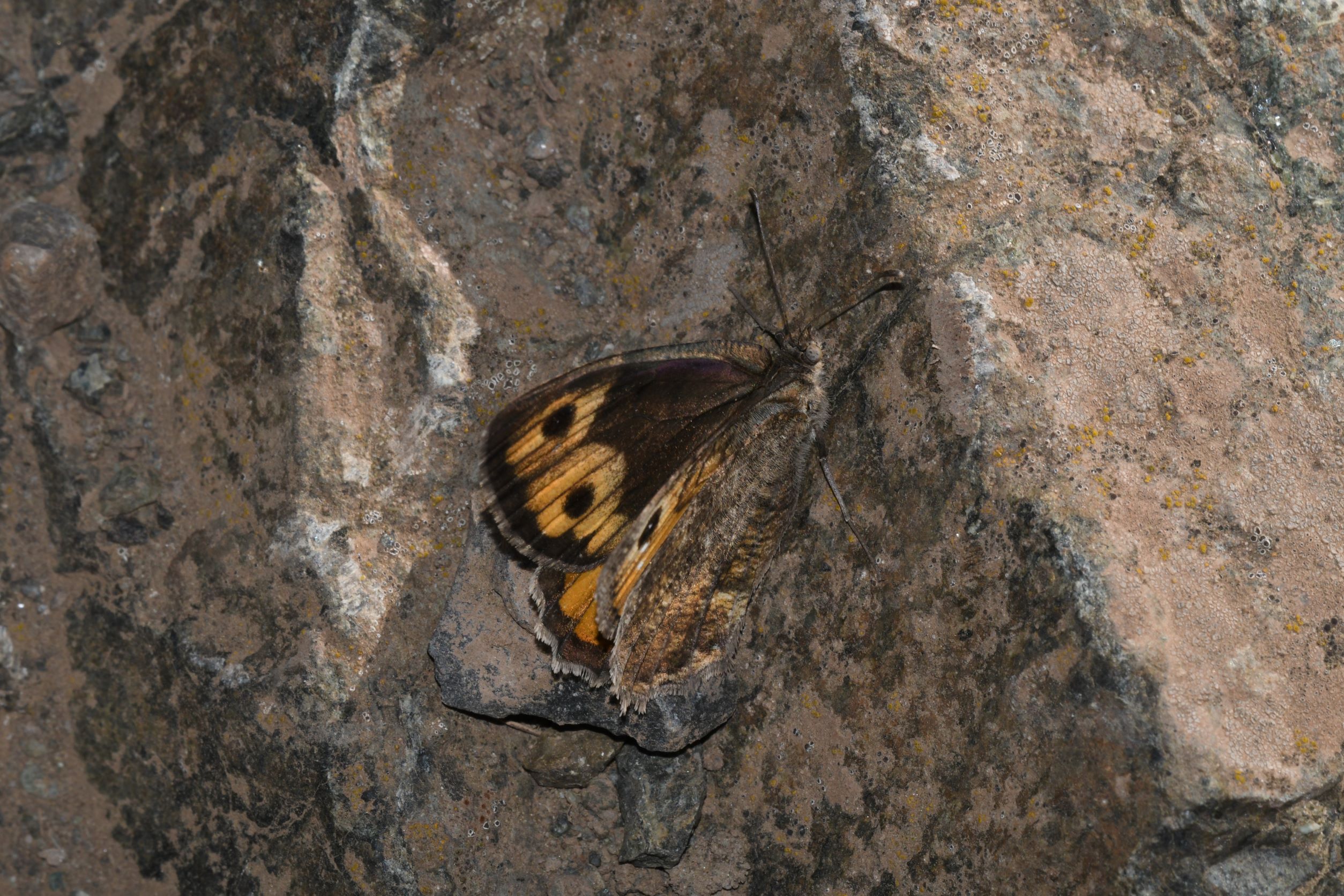
1a. Pseudochazara amymone, distribution map (09.i.2025).  Historical data ; Historical data ;  Additional data from the 2018 update ; Additional data from the 2018 update ;  New observations since the 2018 update. New observations since the 2018 update.
1b. Pseudochazara amymone ♂ underside. Boboshticë, Albania (© Sylvain Cuvelier)
1c. Pseudochazara amymone ♂ caught by a crabspider. Boboshticë, Albania (© Sylvain Cuvelier)
1d. Pseudochazara amymone ♂ caught by a crabspider. Boboshticë, Albania (© Sylvain Cuvelier)
1e. Pseudochazara amymone ♀ underside, Boboshticë, Albania (© Sylvain Cuvelier)
1f. Pseudochazara amymone ♂ underside, Boboshticë, Albania (© Sylvain Cuvelier)
1g. Pseudochazara amymone ♀ lateral, Boboshticë, Albania (© Sylvain Cuvelier)
Description
♂♂
Medium size butterfly. Fw: 22-25 mm.
Ups: gc dark brown. Variable.
Upf:
broad postdiscal bands in fresh specimens are dark grey-brown and quickly change to a lighter grey-brown during the flight period.
The postdiscal band encloses two black ocellli in S2 and S5 that are almost, sometimes completely, blind. In between these two ocelli sometimes two other minute ocelli (now and then only small white dots and it can even be invisible) are present in S3 and S4. Marked sex-brand in the cell that extends to the inner margin of the forewing.
Uph: a single ocellus in S2 (sometimes reduced to a black dot) that is enclosed in the broad orange band.
Uns: gc from whitish grey to orange-brown. Variable.
♀♀
A little larger than the males: 24-27 mm.
Ups: gc dark brown. Variable.
Upf: the broad postdiscal bands are usually orange, but darker ones also occur. This band encloses two black ocelli that always have a white pupil. In between these two ocelli two other minute ocelli are often present in S3 and S4.
Uph: similar to the males.
Uns: gc from form pale orange to orange-brown. Very variable.
Similar species
Pseudochazara tisiphone
Unf: ♂♂ and ♀♀ diffuse submarginal line (Fig. 2b)
Unf: ♂♂ and ♀♀ no black linear markings in the basal area (Fig. 2d)
Upf: ♂♂ sex-brand not in the cell (Fig. 2f)
Uph: ♂♂ two ocelli in submarginal band(Fig. 2h)
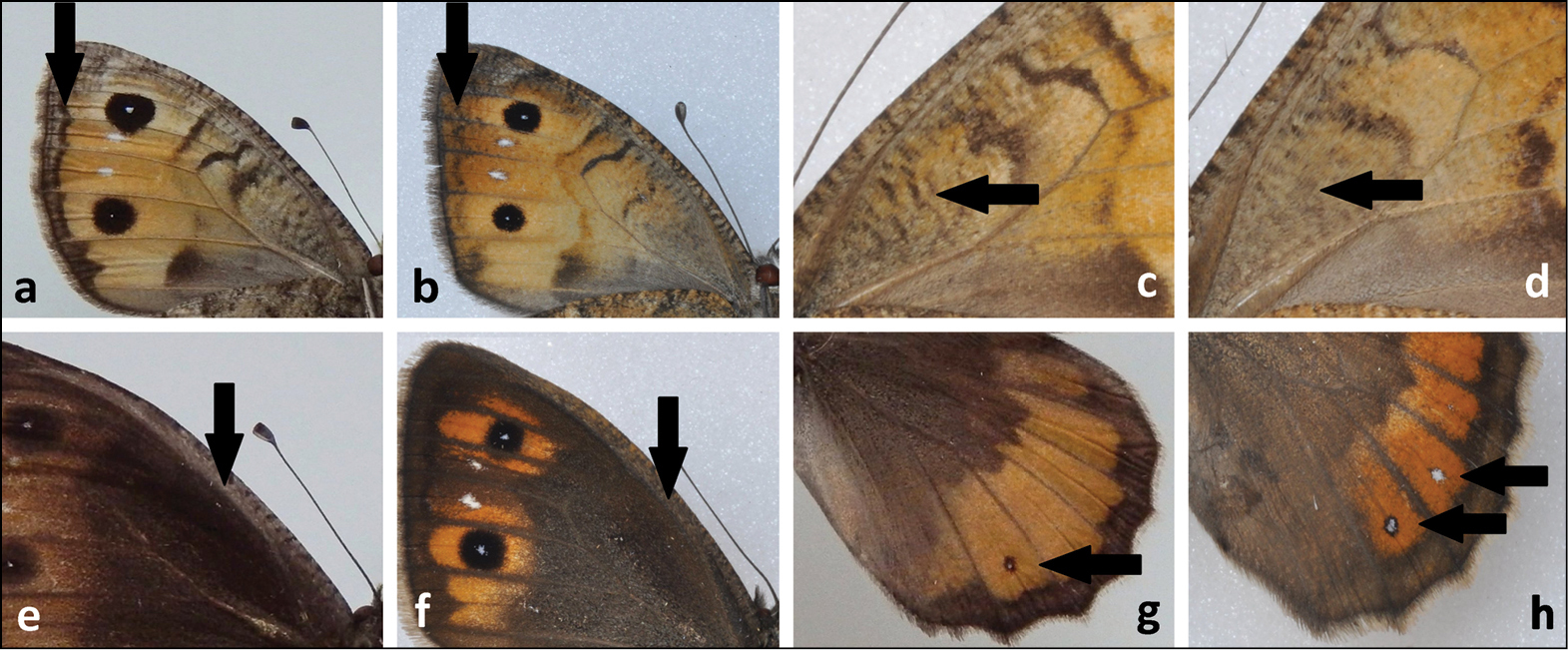
2. Identification keys between Pseudochazara amymone and Pseudochazara tisiphone (Cuvelier S. & Mølgaard M. 2015)
a, c, e, g: Pseudochazara amymone.
b, d, f, h: Pseudochazara tisiphone.
Morphometric parameters of the dentate line in the postdiscal area on the Unh were proposed by Pamperis (url) in a trial looking for differences between Pseudochazara tisiphone, Pseudochazara graeca, Pseudochazara amymone and Pseudochazara orestes. This dentate line is not constant and sometimes barely visible, especially in Pseudochazara tisiphone. The graph clearly shows overlap. The single measured Pseudochazara amymone is an outlier. The use of these criteria is not conclusive.
For a quick comparison (the figures for P. amymone are based on older specimens)
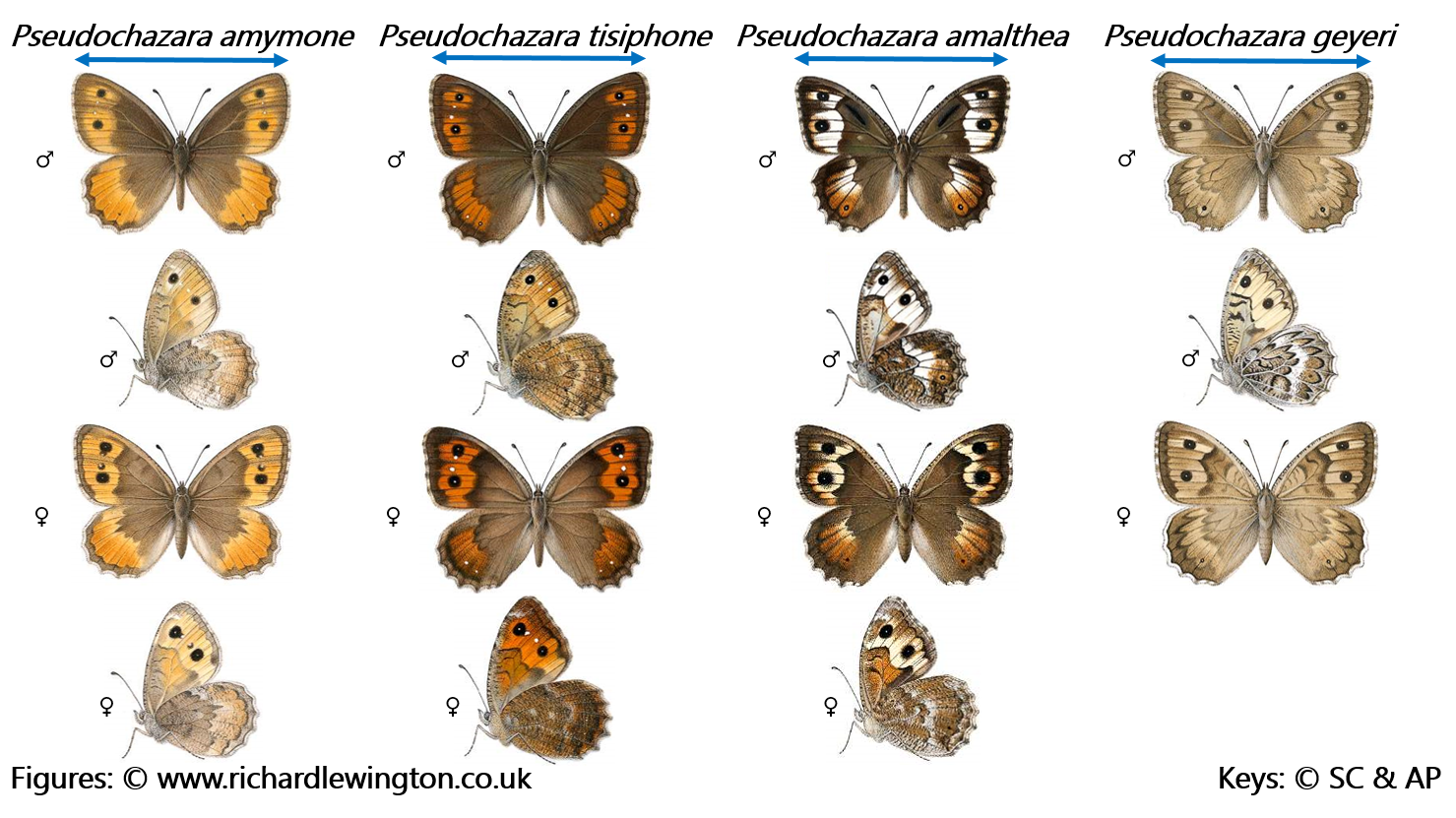
Life cycle
Adults: single brooded.
The preimaginal stages are figured in Gascoigne-Pees et al. (2014) from a rearing program, not in situ.
Egg: laid shortly after females have mated (Fig. 3a)
Caterpillar: most likely overwintering as L1 larva (Fig. 3b-c)
Pupa: > 30 days (in the rearing program)
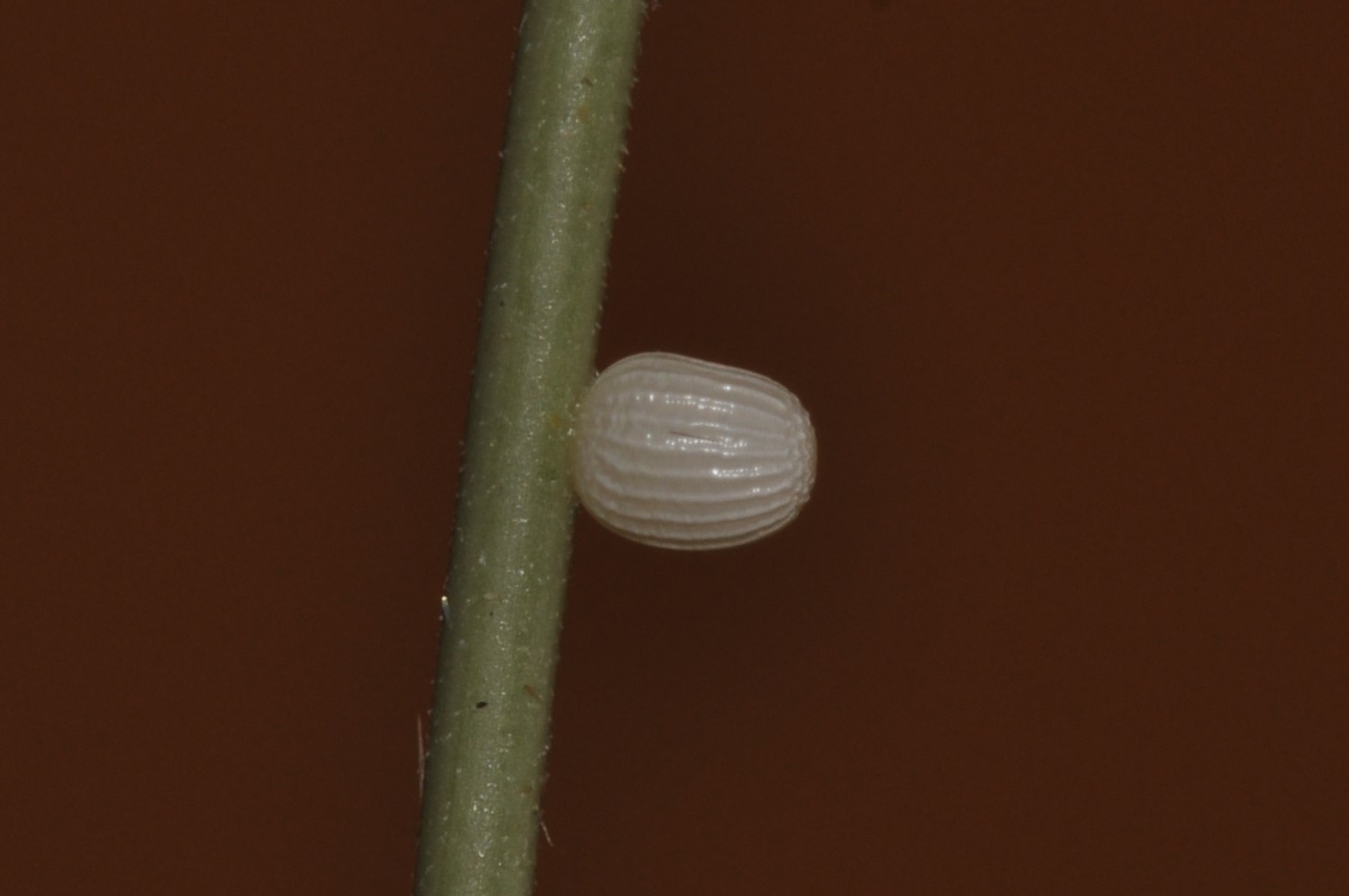 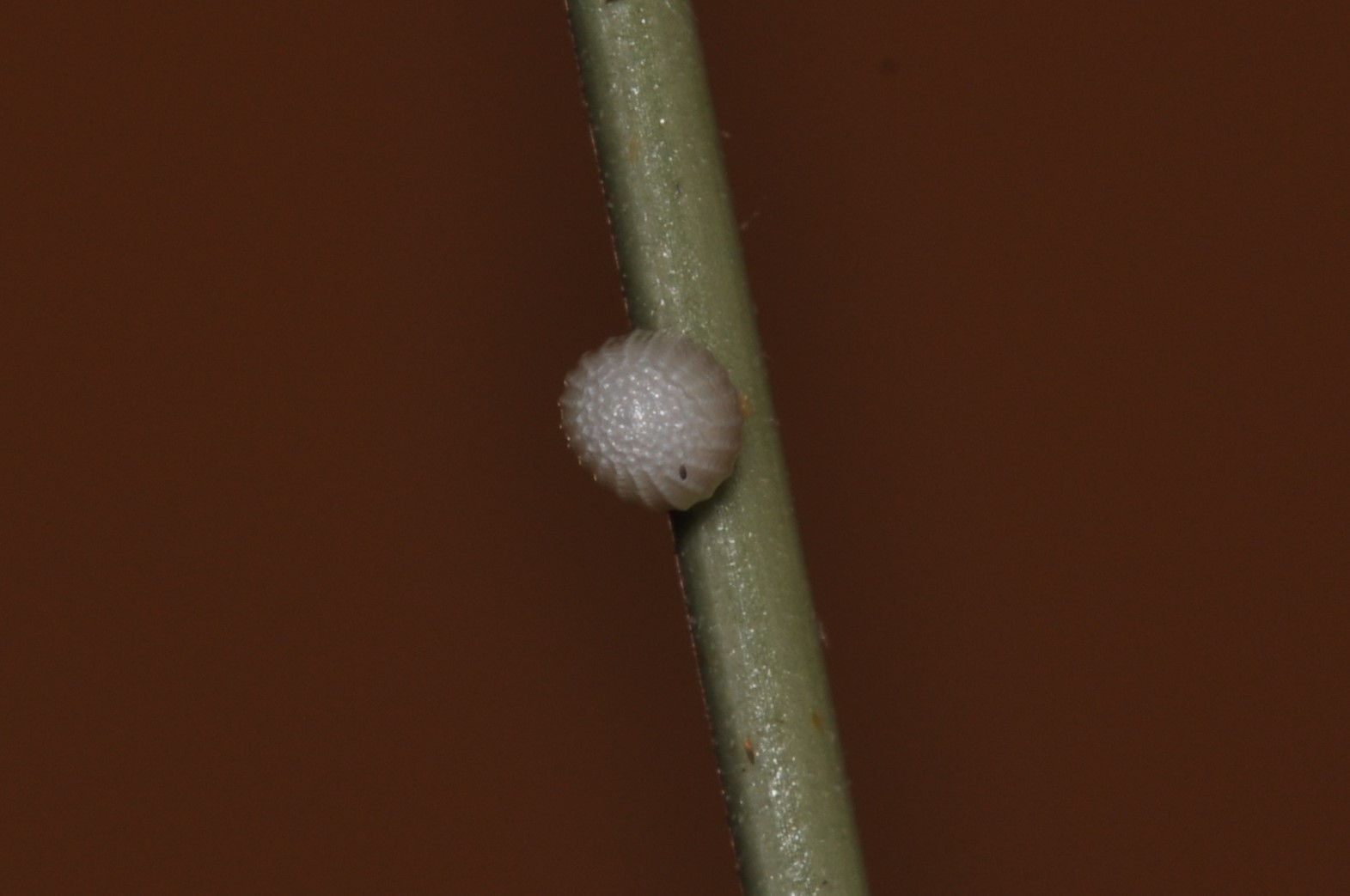 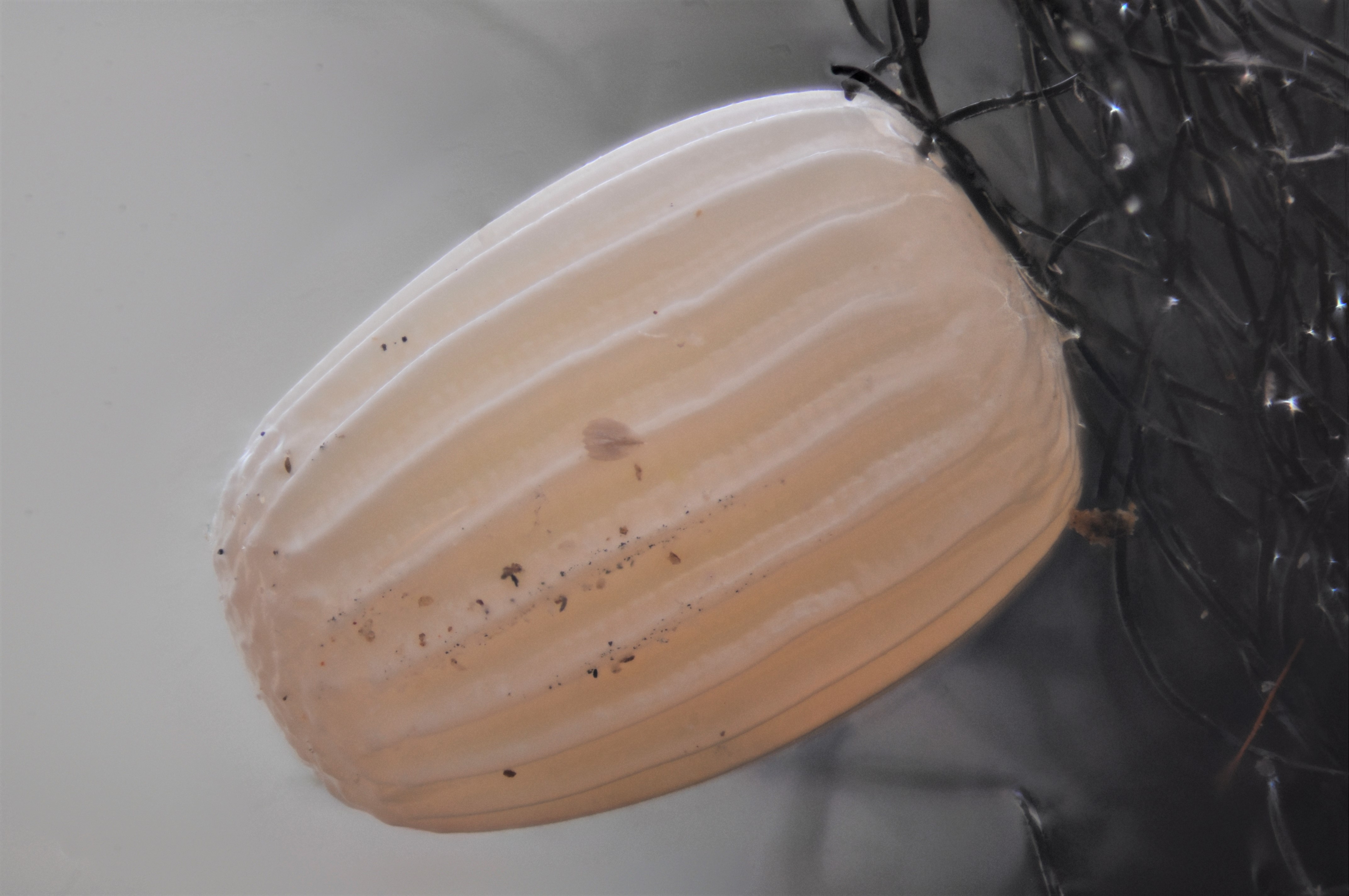
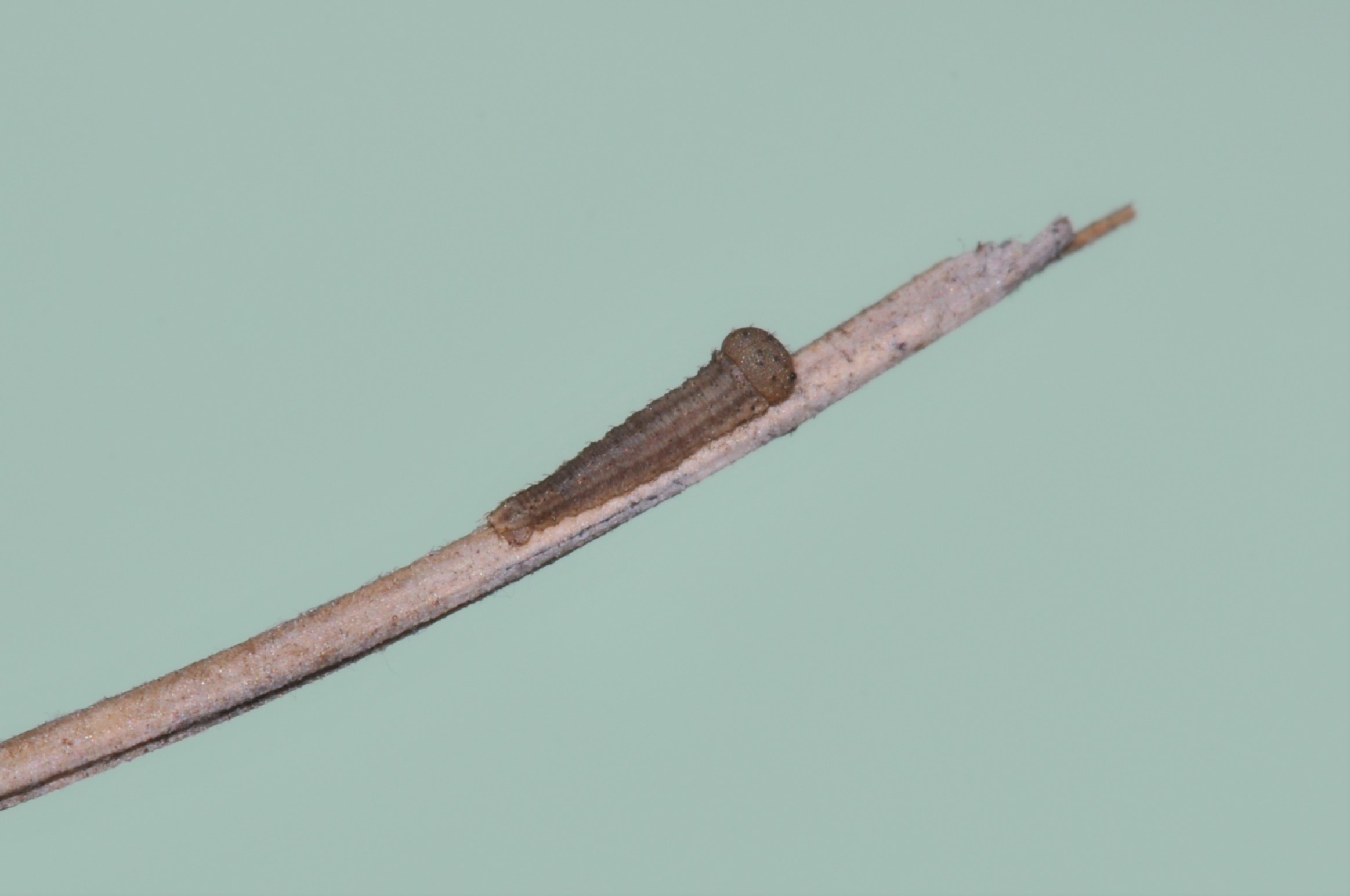 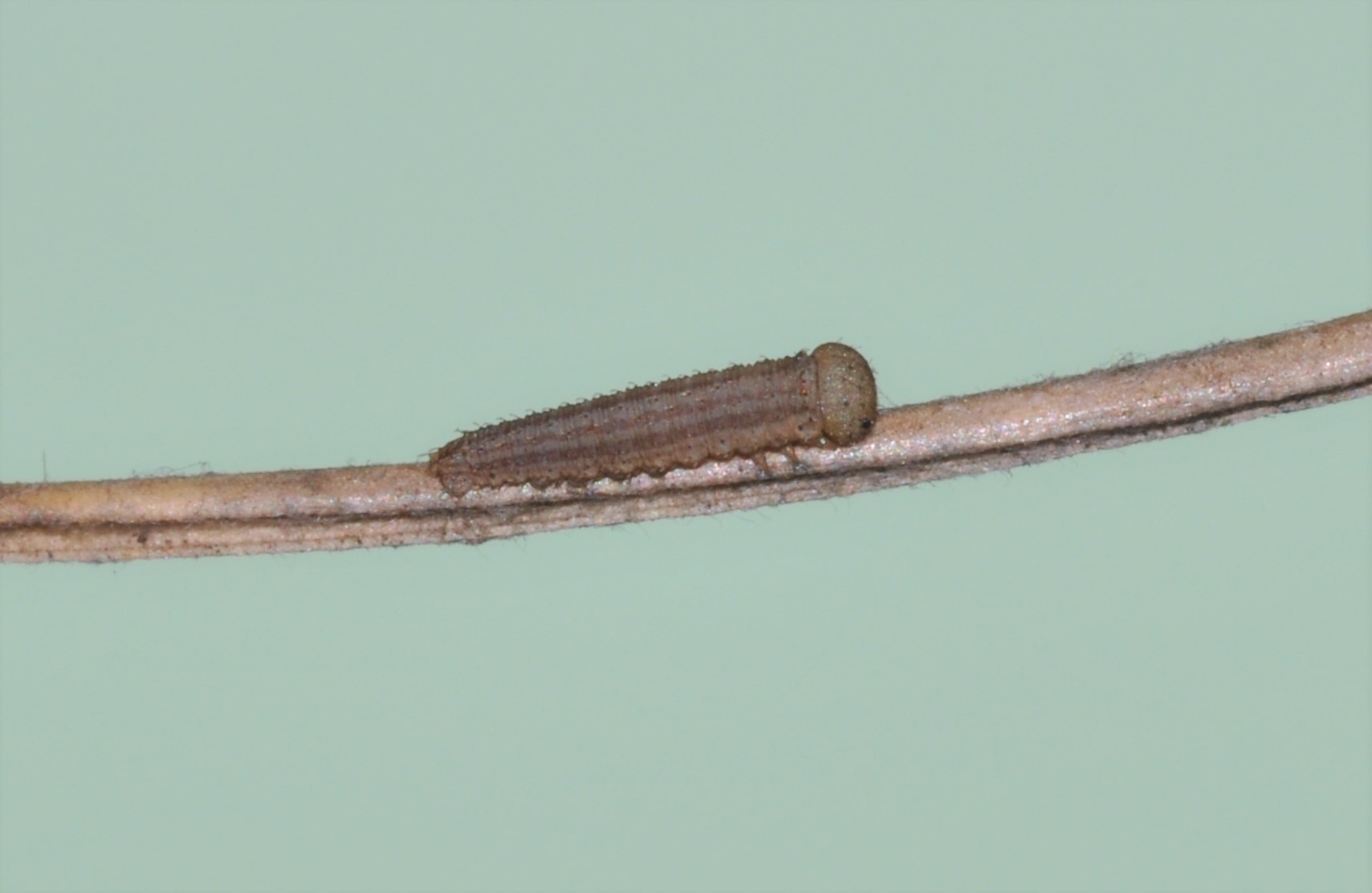 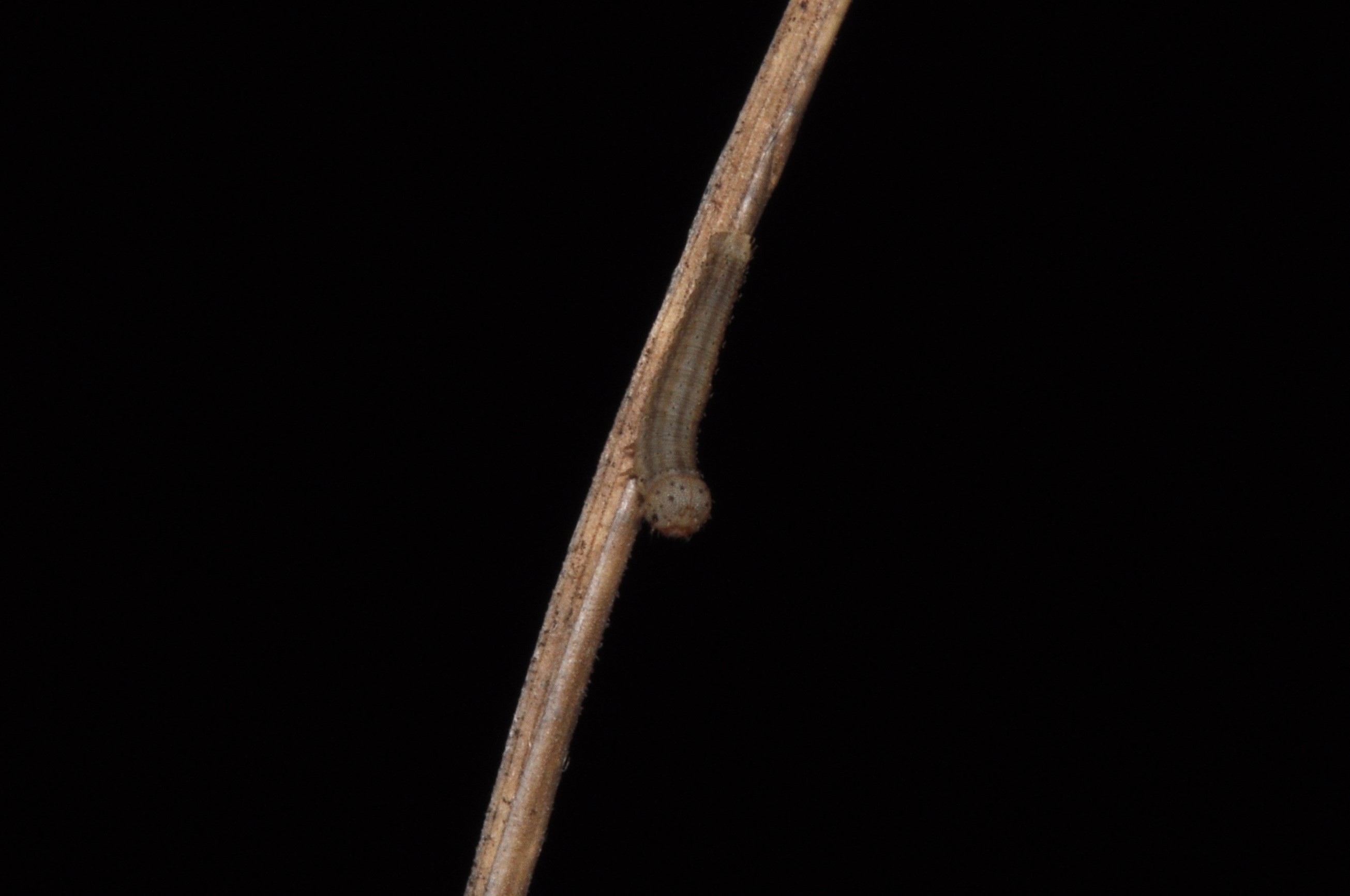
3a-c. Pseudochazara amymone egg. Boboshticë, Albania (© Sylvain Cuvelier)
3d-f. Pseudochazara amymone L1 larva. Boboshticë, Albania (© Sylvain Cuvelier)
Habitat
Pseudochazara amymone inhabits steep, rocky slopes with parts of loose gravel. On this ophiolite substrate with characteristis red-grey colour, scattered grasses grow but otherwise the area is almost devoid of vegetation (Fig. 4.a).
In some localities scattered bushes are present (Fig. 5). During an extremelt hot day the males were regularly seen flying up and down on very steep northerly slopes and fighting on the hill tops (Fig. 4c)
The spatial requirment of Pseudochazara amymone is low and the species is very local, the population density can be high.
The populations of Pseudochazara amymone are sometimes found in a restricted area within a widespread population of Pseudochazara tisiphone.
Some butterflies disperse at the end of the flight time.
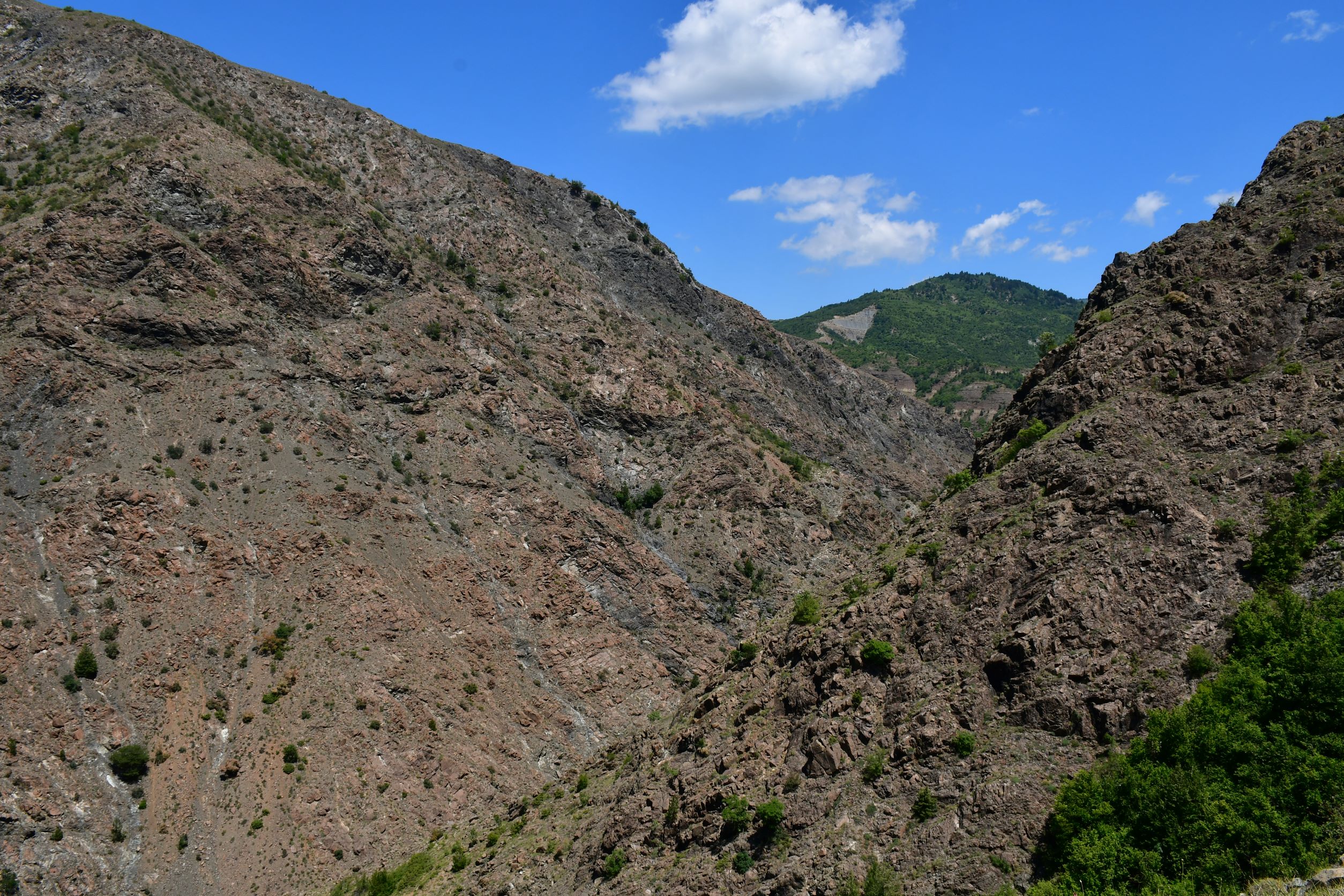 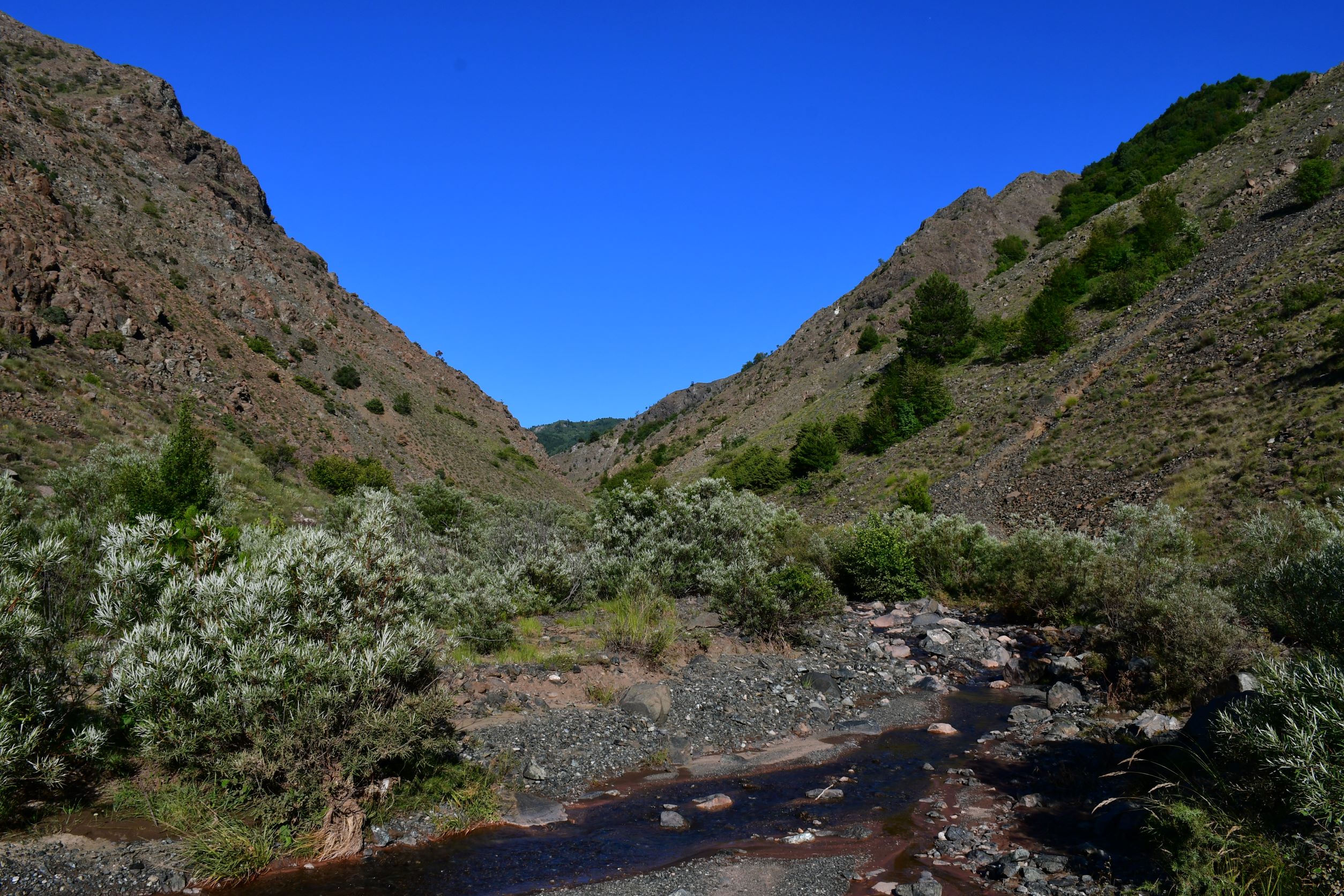
4a. Habitat of Pseudochazara amymone, Boboshticë, Albania (© Sylvain Cuvelier)
4b. Mud-puddling locality of Pseudochazara amymone, Boboshticë, Albania (© Sylvain Cuvelier)
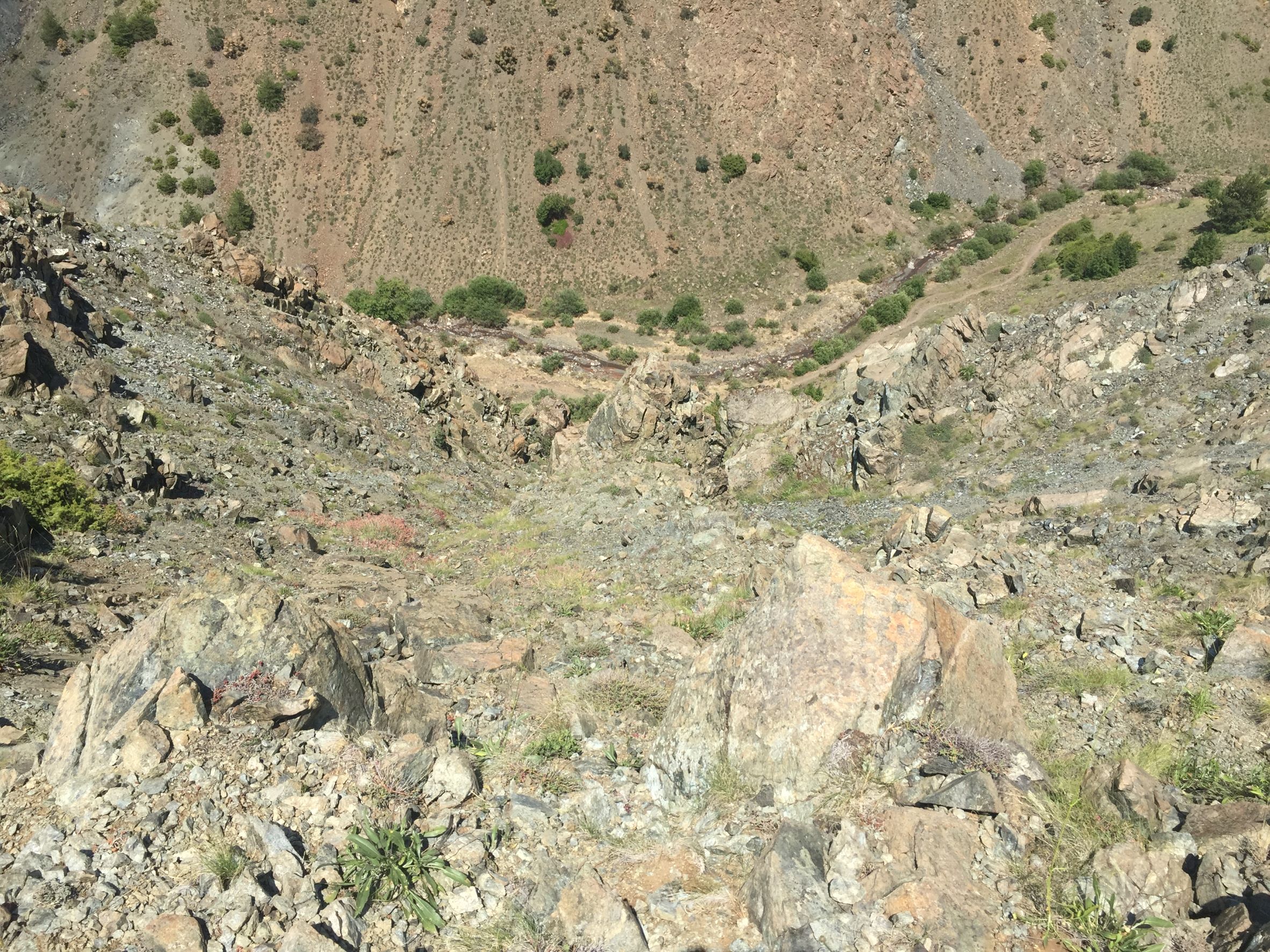
4c. North-facing slopes where Pseudochazara amymone ♂♂ were flying up an down. Boboshticë, Albania (© Sylvain Cuvelier)
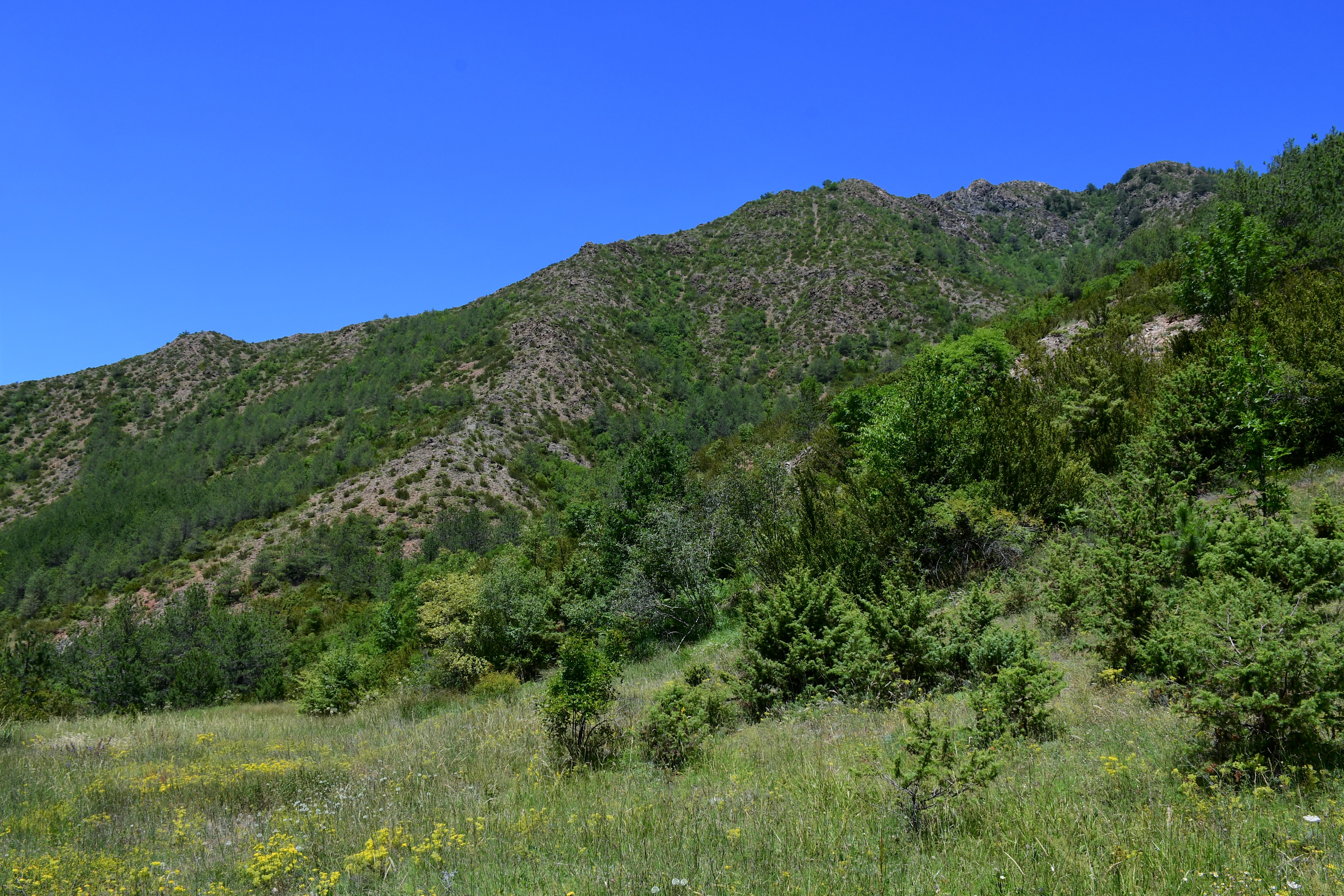
5. Habitat of Pseudochazara amymone. Gjergjevicë, Albania (© Sylvain Cuvelier)
Foodplants
In nature, caterpillars probably feed on Poaceae. In captivity they fed on Festuca ovina and Dactylis glomerata.
Butterflies rarely feed on flowers. Nectaring was observed on Acontholimon, Scabiosa and Centaurea sp.
Different entomologists reported mudpuddling by males and females (Fig. 4b)
Distribution
Albania: very local in southern Albania (more research needed)
Balkan: AL - BG - BIH - GR - HR - NMK - MNE - RKS - RO - SLO - SRB
Europe: IB - IT - ALP - BAL - NWE - UK - SCA - EEU
in Asia Minor, Near East, Caucasus and further east: sibling species, Pseudochazara mamurra.
Conservation status
Albania is probably the stronghold of Pseudochazara amymone. The species is vulnerable despite the obvious difficulties to access the biotopes. One habitat is already destroyed by the construction of hydroelectric power plants (Devoll Gorge). Mining activities in ophiolite areas and a potential tourist attraction near Korçë (a suspension bridge in one of the spectacular valleys) can have a significant impact in the short term.
On the other hand, due to the inaccessibility of ophiolte massifs (some remain completely unexplored for butterflies) more localities where Pseudochazara amymone occurs may not yet be known. Research between the known localities in SE Albania up to Bulqizë are needed and may reveal new populations.
Albanian Red List: VU.
IUCN: EN. IUCN RL criteria: B2ab (ii, iii, iv)
Useful links
euroButterflies
Lepiforum
(url) Eckweiler W. 2012. New discoveries of Pseudochazara mamurra amymone Brown, 1976 (Lepidoptera: Nymphalidae, Satyrinae) — Nachrichten des entomologischen Vereins Apollo, Neue Folge 33: 1-4.
(url) Verovnik R., Popović M., Šašić M., Cuvelier S. & Maes D. 2014. Wanted! Dead or alive: the tale of the Brown's Grayling (Pseudochazara amymone) — Journal of Insect Conservation 18: 675-682.
(url) Cuvelier S. & Mølgaard M. 2015. Pseudochazara amymone (Lepidoptera, Nymphalidae) in Albania: Variability analysis, androconial scales and new distributional data. — Nota lepidopterologica 38(1): 1–22.
(url) Gascoigne-Pees M., Verovnik R., Franeta F. & Popović M. 2014. The lifecycle and ecology of Pseudochazara amymone (Brown, 1976) (Lepidoptera: Nymphalidae, Satyrinae). — Nachrichten des Entomologischen Vereins Apollo, N. F. 35(3): 129–138.
(url) Takats K. & Mølgaard M. 2016. Partial mtCOI-sequences of Balkanic species of Pseudochazara (Lepidoptera: Nymphalidae, Satyrinae) reveal three well-differentiated lineages. — Entomologica romanica 19: 21-40.
(url) Verovnik R. & Wiemers M. 2016. Species delimitation in the Grayling genus Pseudochazara (Lepidoptera, Nymphalidae, Satyrinae) supported by DNA barcodes. — ZooKeys 600: 131–154.
(url) Cuvelier S. 2023. Albania, a country with unexpected, intraspecific genetic variability in butterflies (Papilionoidea: Nymphalidae & Lycaenidae). Balancing on a tightrope between species, subspecies, ESU's and haplotypes. — Lépidoptères 32(82): 32-40.
|
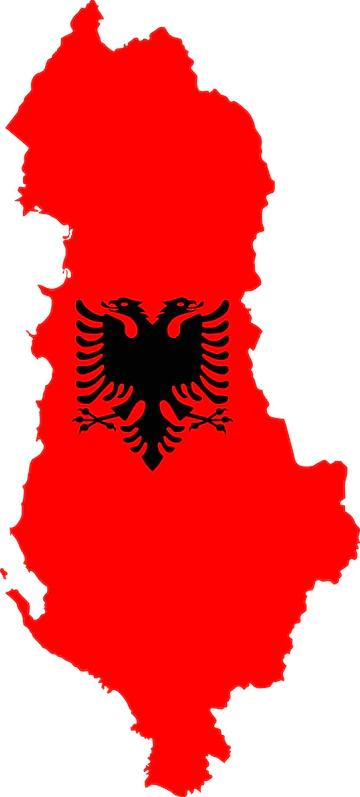 xx
xx 

 Historical data ;
Historical data ;  Additional data from the 2018 update ;
Additional data from the 2018 update ;  New observations since the 2018 update.
New observations since the 2018 update.

